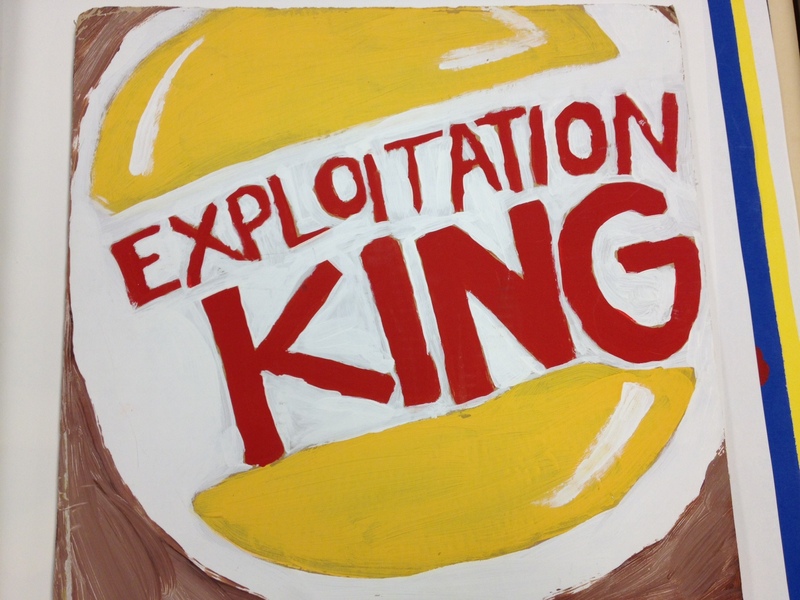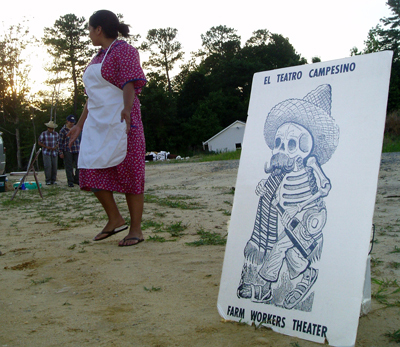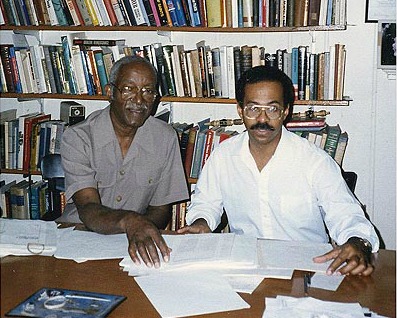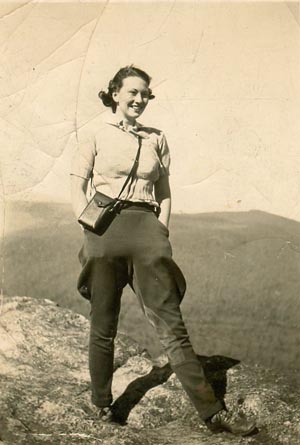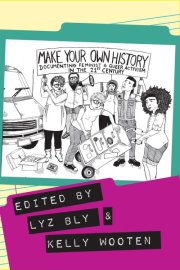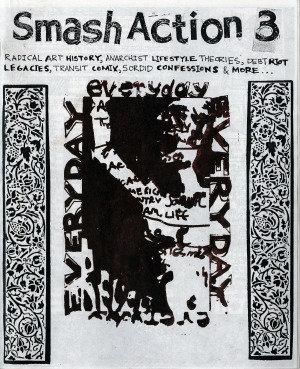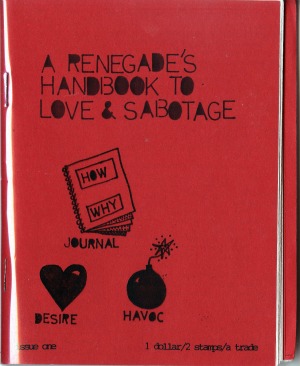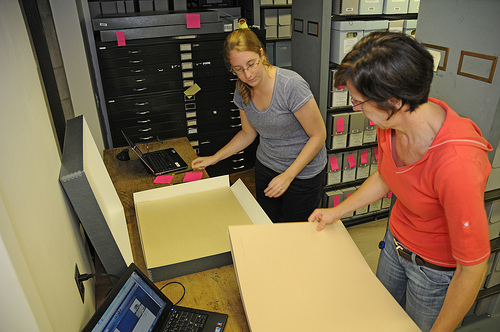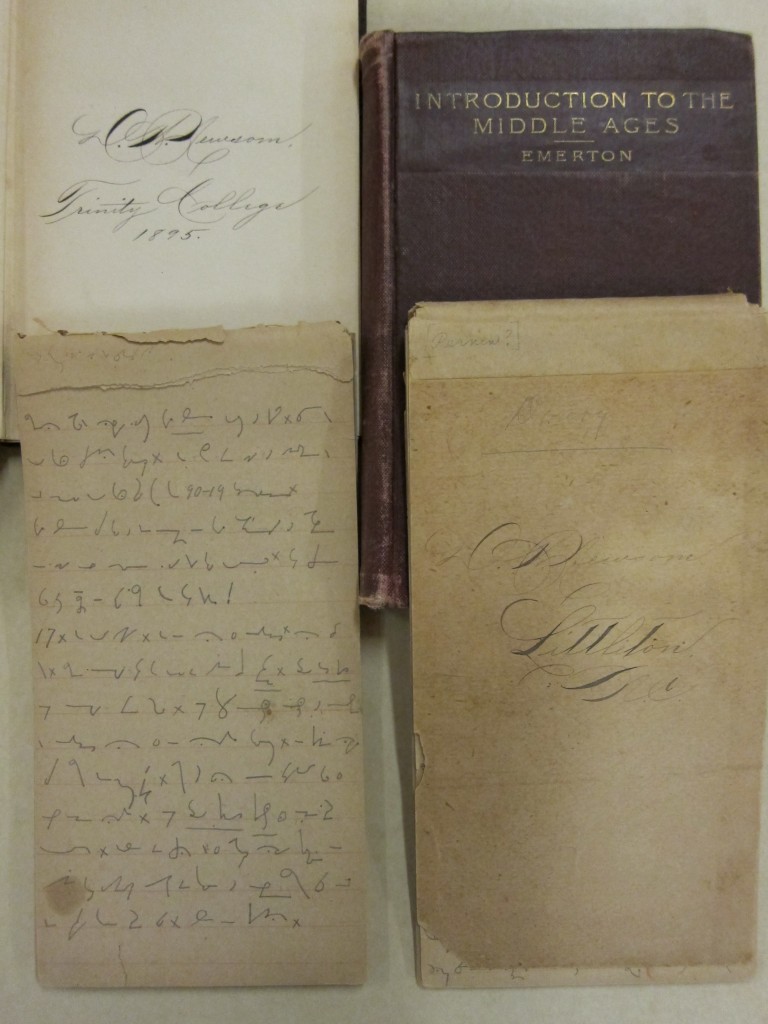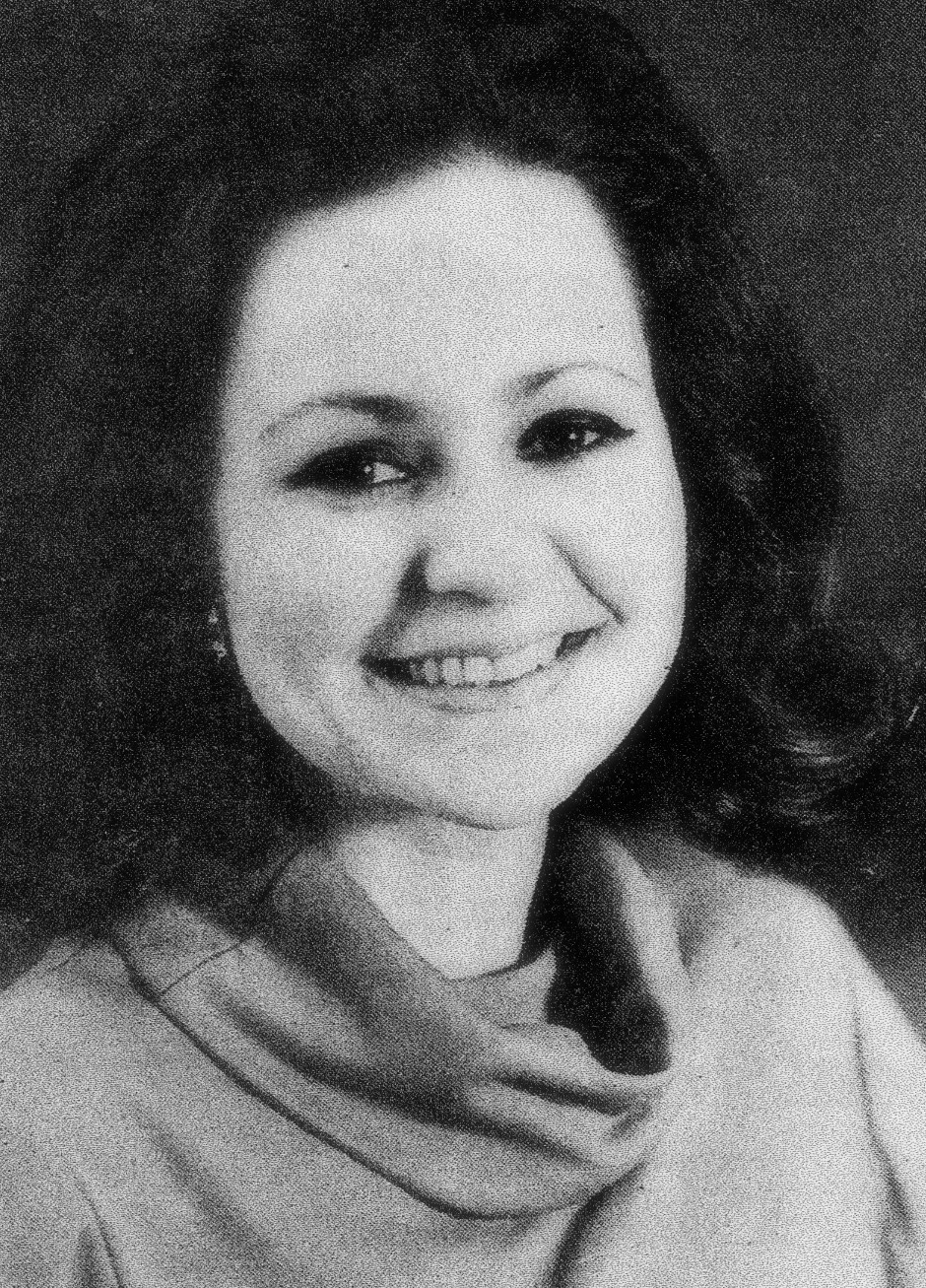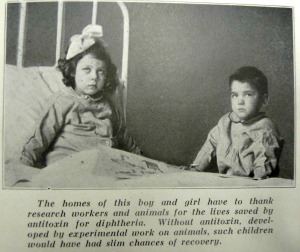Date: Sept. 20, 2012
Time: 5:00 p.m.
Place: Rare Book Room, Perkins Library
Contact: Patrick Stawski, patrick.stawski(at)duke.edu
Three new library exhibitions at Duke explore the human experience of farmworkers and the history of a nonprofit organization dedicated to improving their lives.
For twenty years, Student Action with Farmworkers (SAF) has worked to bring together students, community members, and farmworkers in the Southeast to work for justice in the agricultural system. What began as a small group of Duke Public Policy students documenting farmworker conditions has since grown to an independent nonprofit with a national impact. The organization’s papers are held by Duke’s Human Rights Archive in the David M. Rubenstein Rare Book & Manuscript Library.
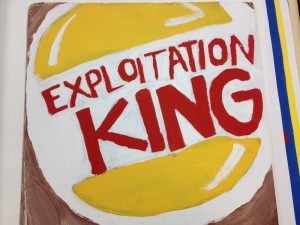 The first of the exhibits, Student Action with Farmworkers: 20 Years of Growing Farmworker Activists, is located in the Perkins Library Gallery and features documentary photos, protest signs, campaign materials, and more items from SAF’s history. An adjacent exhibit on The Art of SAF demonstrates the organization’s use of creative arts in education and outreach. And in the nearby Rubenstein Library Photography Gallery, Documenting the Politics of Food features photographs of American agriculture and agricultural labor from the Rubenstein Library’s documentary photography collections.
The first of the exhibits, Student Action with Farmworkers: 20 Years of Growing Farmworker Activists, is located in the Perkins Library Gallery and features documentary photos, protest signs, campaign materials, and more items from SAF’s history. An adjacent exhibit on The Art of SAF demonstrates the organization’s use of creative arts in education and outreach. And in the nearby Rubenstein Library Photography Gallery, Documenting the Politics of Food features photographs of American agriculture and agricultural labor from the Rubenstein Library’s documentary photography collections.
All three exhibits reflect historical and contemporary concerns with student activism, access to safe and healthy food, organized labor, and immigration. The exhibits run through December 9, 2012.
An opening reception for the exhibits will be held at 5:00 p.m. on Thursday, September 20, in the Rare Book Room of Duke’s Perkins Library on Duke’s West Campus. The reception, which will feature Latin American food and live music, is free and open to the public.
“Contrary to the perception of some, Duke students have a rich and impressive legacy of progressive activism,” said Robin Kirk, co-director of the Duke Human Rights Center. “No group symbolizes this more effectively than Student Action with Farmworkers. This feisty group has made a real difference in the lives of farmworkers, normally invisible and largely forgotten by all of us who benefit from their backbreaking work. The partnership between the Human Rights Archive and SAF brings this history into view at a time when the issues involved—fair wages, immigration, and safety for these important workers—are at the forefront of a presidential campaign.”
The exhibits are co-sponsored by SAF, the Duke University Libraries, the Center for Documentary Studies, the Franklin Humanities Institute BorderWorks Lab, the Duke University Service Learning Program, and the E. Rhodes and Leona B. Carpenter Foundation.
These exhibits are part of a larger series of events around the state celebrating the 20th anniversary of Student Action with Farmworkers, including a portable mural display and oral history interviews with National Public Radio’s StoryCorps. More information can be found at www.saf-unite.org or http://library.duke.edu/rubenstein/human-rights.


